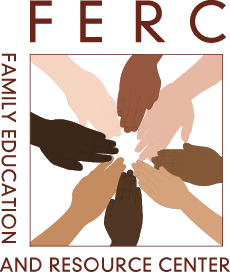Common Mental Health Disorders
Anxiety, Mood, Eating, Psychotic & Dissociative Disorders
Educating yourself is an important part of understanding what your loved one with a mental health condition is experiencing, and it may also reduce your own anxiety and confusion. Below is a grouping of some common mental health diagnoses (Source NAMI and Verywellmind). However, this is not a complete list and the definitions and experiences are fluid. Please consult a medical professional for further explanation and consultation.
Contact
Family Education & Resource Center
7677 Oakport St. Suite 100
Oakland, CA 94621
Warm Line: (888) 896-3372
Office: (510) 746-1700

Anxiety Disorders
Anxiety disorders are a group of related mental health conditions, each having unique symptoms. However, all anxiety disorders have one thing in common: persistent, excessive fear or worry in situations that are not threatening. People typically experience one or more of the following symptoms:
Emotional Symptoms
Physical Symptoms
Most Common Types of Anxiety Disorders
Mood Disorders
A mood disorder, also called an affective disorder, is a condition that severely impacts mood and its related functions. Mood disorder is a broad term that’s used to include all different types of depression and bipolar disorder, both of which affect mood. If someone has symptoms of a mood disorder, their moods may range from extremely low (depressed) to extremely high or irritable (manic).
Most Common Types of Mood Disorders
Eating Disorders
When you become so preoccupied with food and weight issues that you find it harder and harder to focus on other aspects of your life, it may be an early sign of an eating disorder. Eating disorders involve extreme emotions, attitudes, and behaviors involving weight and food.
Most Common Types of Eating Disorders
Psychotic Disorders
Psychosis is described as disruptions to a person’s thoughts and perceptions that make it difficult for them to recognize what is real and what isn’t. People with psychotic disorders lose contact with reality and experience a range of extreme symptoms that usually includes hallucinations — hearing or seeing things that are not real, such as voices; and delusions — believing things that are not true. However, these symptoms can occur in people with other health problems, including bipolar disorder, dementia, substance abuse disorders, or brain tumors.
Most Common Types of Psychotic Disorders
Dissociative Disorders
Dissociative disorders are defined by an involuntary escape from reality through a disconnection between thoughts, identity, consciousness, and memory. The symptoms of a dissociative disorder usually first develop as a response to a traumatic event, such as abuse or military combat, to keep those memories under control. Stressful situations can worsen symptoms and cause problems with functioning in everyday activities.
Most Common Types of Dissociative Disorders
Get a Diagnosis
Take the First Step
If you think your loved one is experiencing a mental illness, talk to your loved one, find professional help, and get information. People with mental illness can and do recover and lead rich and meaningful lives. It takes a trained mental health professional to diagnose mental illness.
To begin the process, if your friend or family member has health insurance, call the number listed in the health plan member’s information. If your friend or family member does not have health insurance, call the Alameda County Behavioral Health Care Services ACCESS number (800) 491-9099.
